Willem de Kooning in 5 Works: A Look at the Abstract Expressionist Master
Willem de Kooning was a pivotal figure in 20th-century art and a leading force in Abstract Expressionism. His dynamic brushwork, complex...
Carlotta Mazzoli 18 July 2024
Abstract Expressionist painter Judith Godwin (1930-2021) challenged the norms of a male-dominated art movement. She started under the tutelage of Hans Hofmann, but her work evolved in depth and complexity into an elaborate style drawing inspiration from architecture and nature. Godwin’s modernist vision continues to captivate audiences with its boldness and unwavering resistance to gender norms.

Photograph of Judith Godwin in front of her artwork. Pippy Houldsworth Gallery.
Judith Godwin was born in 1930 in Suffolk, Virginia. She began her studies at Mary Baldwin College and held her first exhibition in 1950 in her hometown at Mountcastle. Godwin later transferred to Richmond Professional Institute, now Virginia Commonwealth University (VCU), and graduated with a BFA in 1953. During her time at Mary Baldwin College, Godwin became friends with the dancer and choreographer Martha Graham, who informed her artistic work such as the Nucleus (1950) series. The captivating blend of organic shapes and Cubist lines supply these works with a distinctive rhythm.
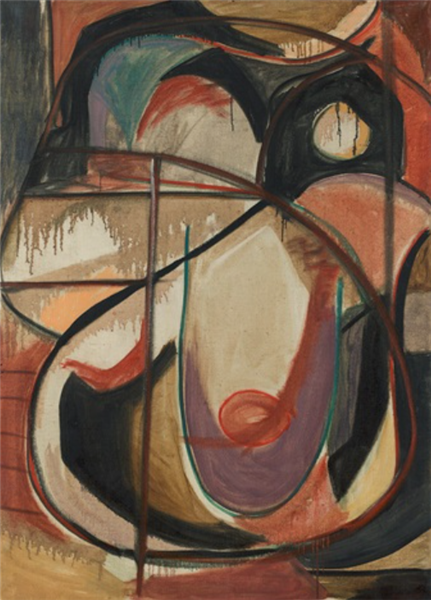
Judith Godwin, Nucleus IV, 1950, Berry Campbell Gallery, New York City, NY, USA.
Godwin continued her studies in New York City at the Art Students League and later under the mentorship of Hans Hofmann at the School of Fine Arts. Hofmann’s theories that painting should explore depth and volume while preserving the inherent flatness of the medium influenced Godwin, who started painting with bold and expressive strokes and lively compositions. The approach honed Godwin’s appreciation for the expressive potential of colors. Yellow Figure showcases her grasp of shape language and color dynamics.
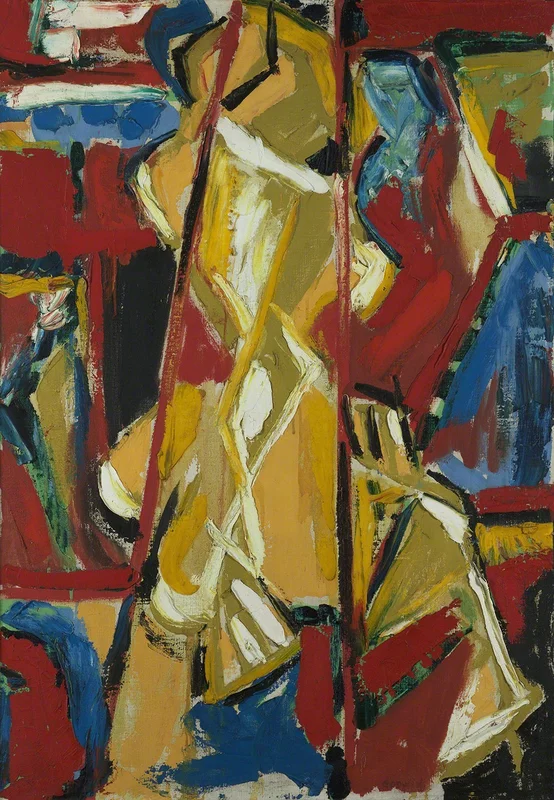
Judith Godwin, Yellow Figure, 1953, Berry Campbell Gallery, New York City, NY, USA.
Through Hofmann and at the Cedar Tavern, Godwin connected with key figures of the city’s art scene, including Willem de Kooning, Marcel Duchamp, James Brooks, Jackson Pollock, Mark Rothko, and Japanese abstract painter Kenzo Okada, who sparked her interest in Zen Buddhism in the 1950s. Godwin experimented with this newfound inspiration in pieces like Abstraction No. 15, where serene colors and motifs referencing the natural world echo Okada’s style, as well as elements of Japanese art and gardens.
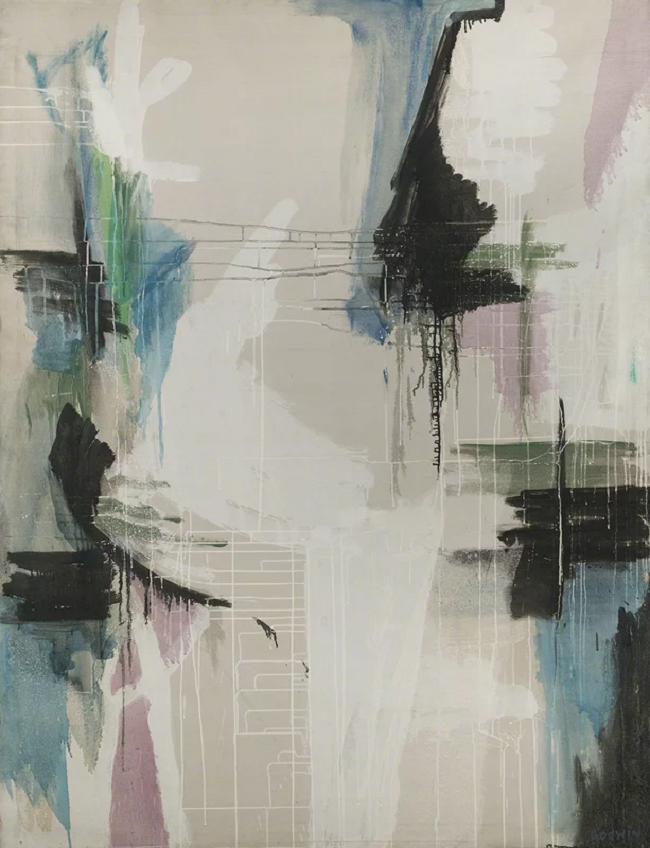
Judith Godwin, Abstraction No. 15, 1955, Berry Campbell Gallery, New York City, NY, USA.
Godwin often spoke up about her desire to produce strong and impactful art and for women painters to be treated on equal terms as her male peers, both critically and commercially. Pieces like Black Pillar demonstrate her prowess in arranging pigments on canvas with sweeping brushstrokes.
… if you were a [woman] painter in that period, you felt you had to paint as strongly, as violently as the men did.
Cited in Ann Gibson, Judith Godwin: Style and Grace, Art Museum of Western Virginia: 1998.
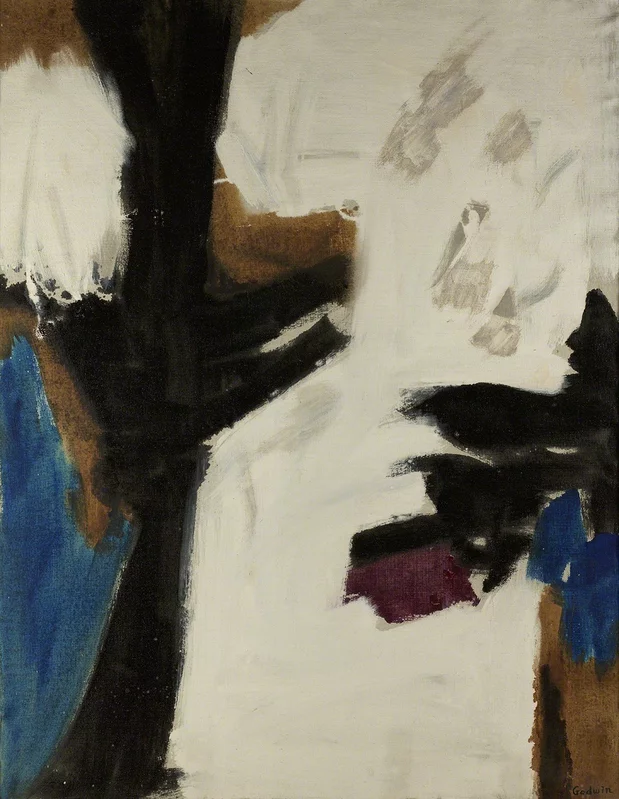
Judith Godwin, Black Pillar, 1956, Berry Campbell Gallery, New York City, NY, USA.
Godwin’s art started gaining recognition in the late 1950s. She was featured in the first exhibition at Betty Parsons’s Section Eleven Gallery in 1958, alongside artists like David Budd, Agnes Martin, and Sidney Wolfson. The subsequent year, she took part in the Stable Gallery Invitational Show as one of the few female artists showcased in these exhibitions.
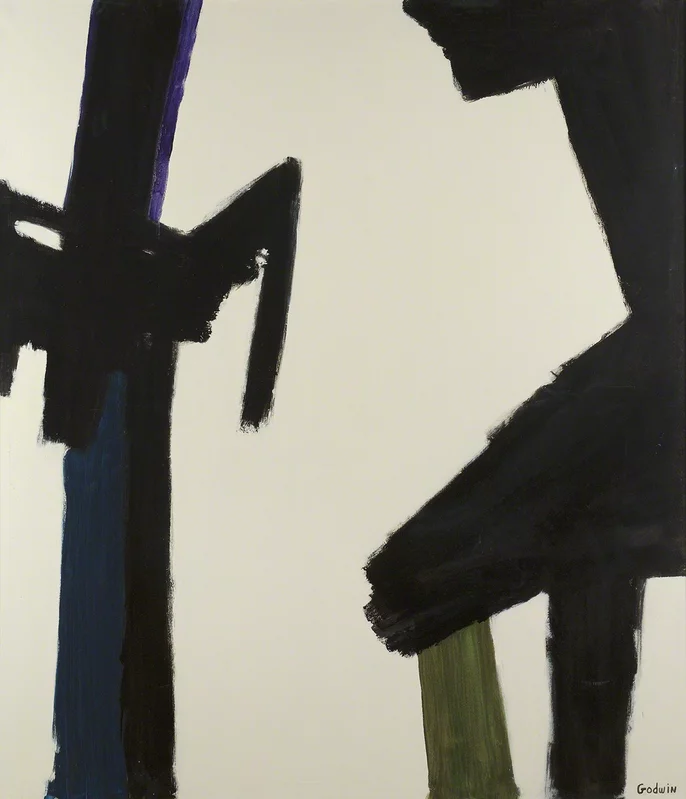
Judith Godwin, Scorpio, 1960, Berry Campbell Gallery, New York City, NY, USA.
In the 1960s, she ventured into new realms beyond the bustling New York art scene, exploring interior design and architectural restoration. During the time when Pop Art overshadowed Abstract Expressionism, Judith Godwin incorporated elements from Native American art to diversify her work. Delving into interior design, she apprenticed as a plasterer, mason, and carpenter and contributed to the restoration of 18th-century homes in Connecticut. She remained active as a painter while also engaging in landscaping and textile design endeavors in New York and Connecticut.
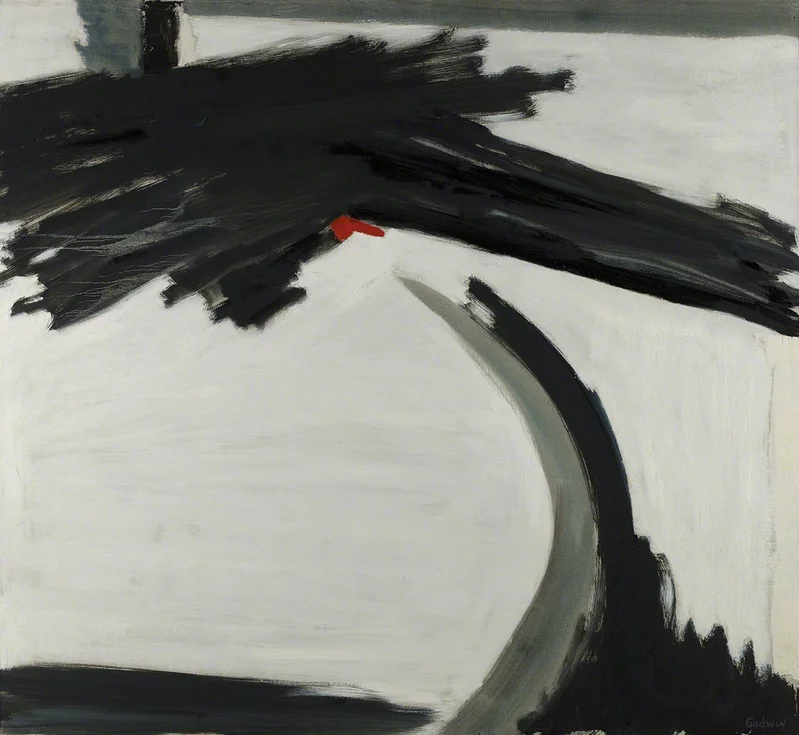
Judith Godwin, Flying Steel No. 1, 1975, Berry Campbell Gallery, New York City, NY, USA.
Upon returning to New York in 1974, Godwin’s style took on a new vigor. Her Flying Steel No. 1, which she exhibited in her solo exhibition at Ingber Gallery in December 1977, retained her spontaneous painting approach with the stylistics of her earlier outdoor work. Godwin proceeded to blend architectural elements, natural motifs, and abstract forms. This enabled her to create compositions that were both dynamic and harmonious, as in the piece Elegy to a Slain Deer.
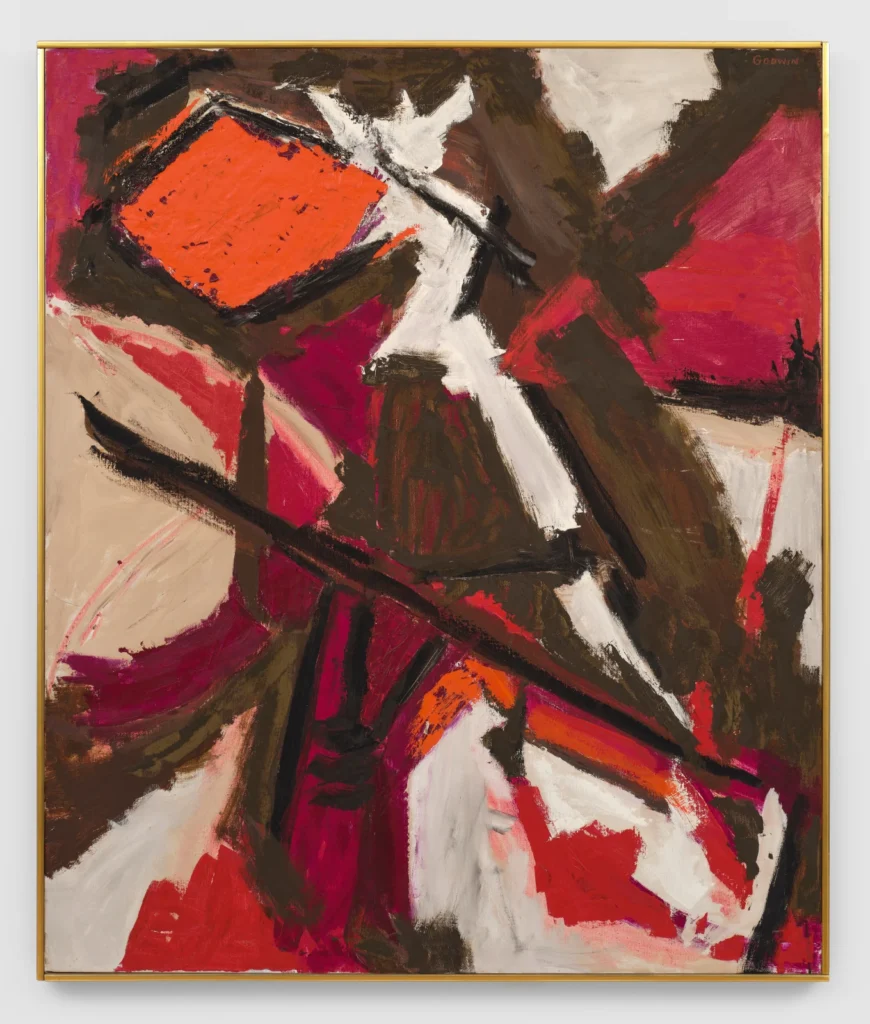
Judith Godwin, Elegy to a Slain Deer, 1975. Pippy Houldsworth Gallery, London, UK.
During the 1980s, Godwin introduced a sensual quality to her paintings by embracing soft hues and decorative elements. In the following decade, she combined various materials found in her studio, such as pennies, gold leaves, and ribbons, to create cohesive and harmonious compositions with the use of assemblage.
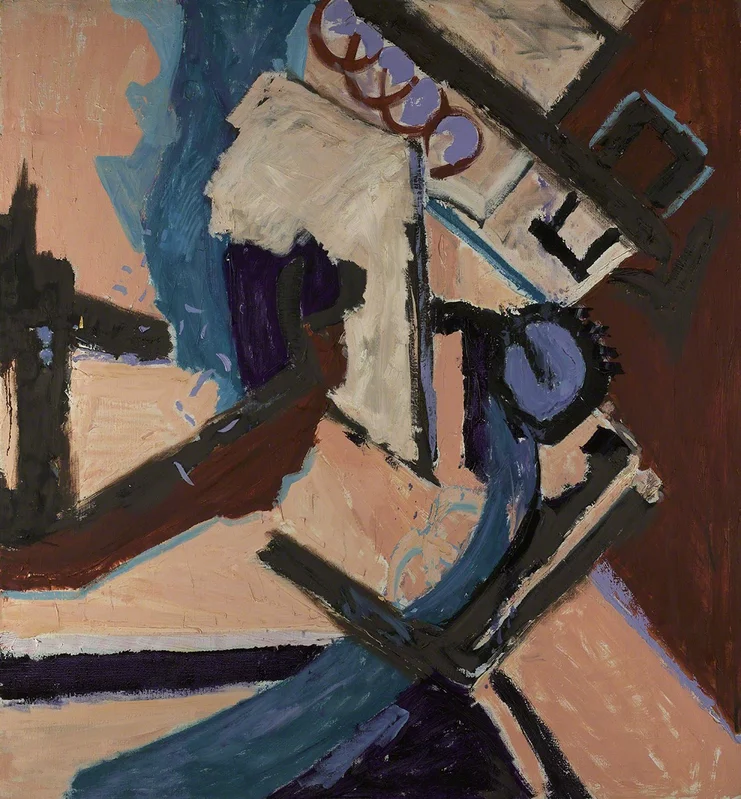
Judith Godwin, Beating Time, 1984, Berry Campbell Gallery, New York City, NY, USA.
Following her career, Judith Godwin has been represented by several prestigious galleries, including Marisa del Re Gallery, Spanierman Gallery, and Berry Campbell Gallery. Known for her dynamic abstract paintings, her works have found their way into numerous private collections. Her artworks are featured in more than thirty-five museums, including renowned institutions such as the Metropolitan Museum of Art, both the Museum of Modern Art and MoMA PS1 in New York, and the National Museum of Women in the Arts in Washington, DC.
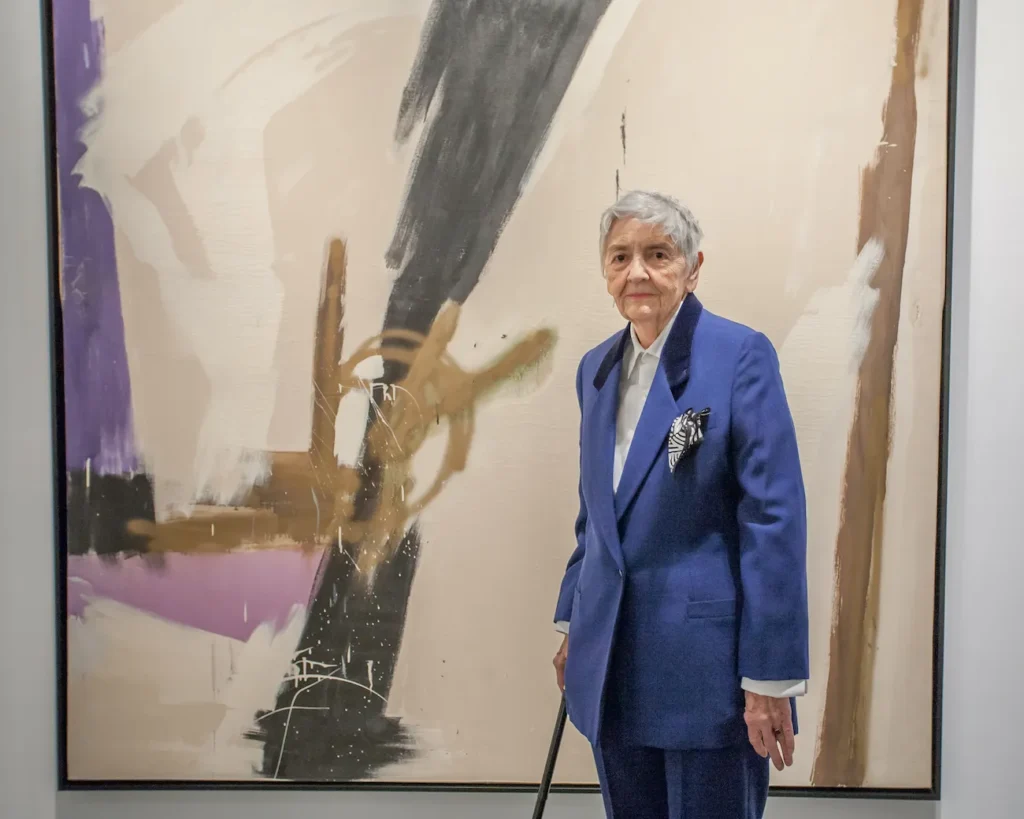
Judith Godwin in front of her work. Photograph by George Sierzputowski. Art Forum.
Throughout her life, Judith Godwin earned numerous awards and accolades. Her pieces were displayed in nearly sixty solo and group exhibitions. In 2016, Godwin was featured in the Denver Art Museum’s pioneering exhibition Women of Abstract Expressionism as one of the twelve influential women artists of the movement. The show reaffirmed her significance in the art world.
DailyArt Magazine needs your support. Every contribution, however big or small, is very valuable for our future. Thanks to it, we will be able to sustain and grow the Magazine. Thank you for your help!